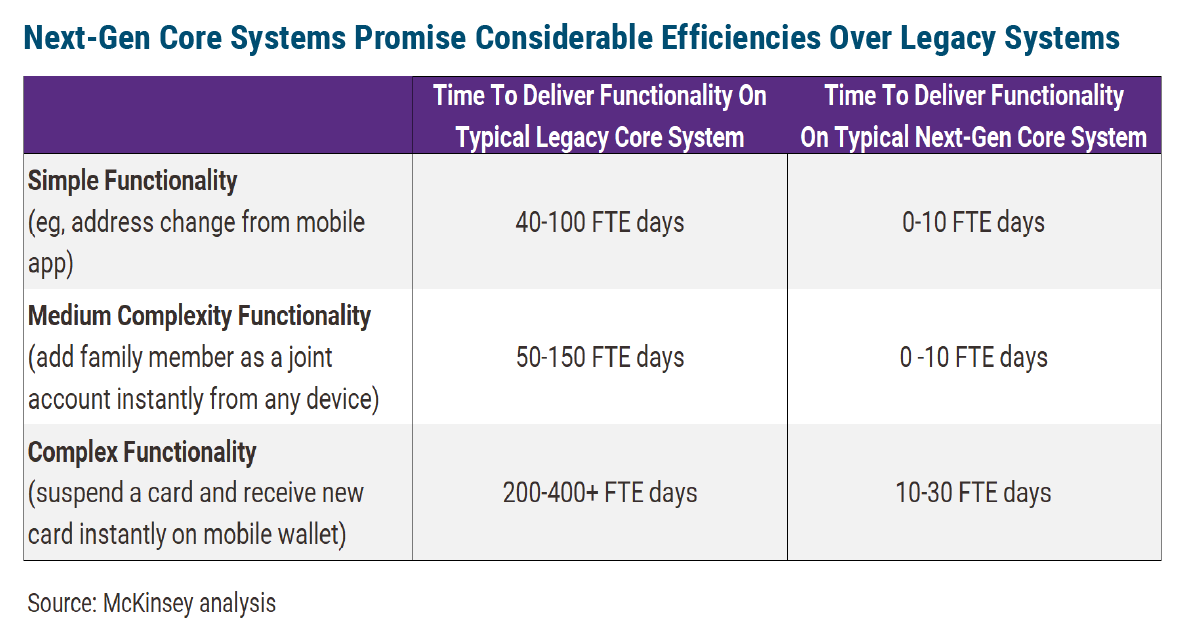Next-gen core banking systems could dramatically increase speed to market over traditional legacy systems, according to data compiled by McKinsey. The analysis looked at how long it took to deliver different kinds of capabilities — from simple functionality like changing an address in a mobile app to more complex actions like suspending and reissuing a card — on a typical legacy core system versus a typical next-gen core. And the results are pretty staggering.
While delivering simple functions might take between 40 and 100 FTE days on a legacy system, a bank on a next-gen core would likely be able to do it in just over a week, at most. The gap was similarly stark across more complex levels of functionality, with next-gen cores demonstrating an ability to deliver even the most advanced features in a month or less, while legacy cores could take over a year. What’s critical about this data is that it’s measuring time, and it’s some of the most valuable time inside of a bank. Technology talent is extremely expensive, which means any opportunity to free up time in this area is likely going to lead to significant efficiencies. And, by giving IT teams the ability to move faster, products are out the door quicker.
There is no doubt the ability to get to market quickly is key. It allows banking institutions to test new features more easily, stay on top of the competition, and keep customers satisfied. But the ability to make better use of their technology talent is a benefit that needs to be stressed here. Many banks, especially smaller ones, are reluctant to spend too heavily on development talent, instead choosing to outsource most of their tech needs to vendors. By leveraging a next-gen core, these institutions could potentially get to more differentiated products, faster using just a small pool of skilled developers. Yes, this means an upfront cost and commitment, but, on the backend, the return on investment is likely to be high if it means better utilized technology spend overall and a differentiated position with customers.
This is a situation in which the numbers truly tell the story. We’re not talking a difference of a few days. It’s weeks, months, or even longer, which, when translated into dollar value could be quite significant, particularly for smaller institutions that may be struggling to compete to begin with. When assessing your infrastructure and how it aligns to your strategy, considering moving to next-gen core may be at least a worthwhile conversation to have.







